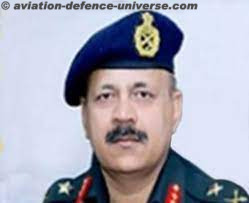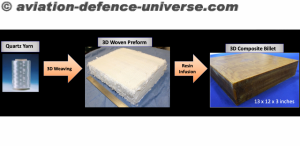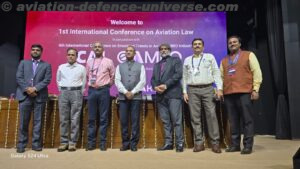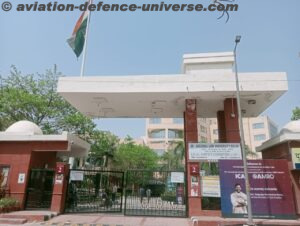 By Maj Gen (Dr.) Ashok Kumar, VSM (Retired)
By Maj Gen (Dr.) Ashok Kumar, VSM (Retired)
New Delhi. 20 November 2024. All forces and resources available to a Nation are utilised to ensure the furtherance of national objectives. The level and manner in which these war waging resources are employed, largely depends on the nature and character of the conflict. These operations may cover a very wide spectrum- from application of small force level to the full-fledged operations.
India has always advocated peace not only with its neighbours but for the world as well. It has been articulating its national policy of ‘Vasudhaiv Kutumbakam’ on a regular and sustained basis. The country doesn’t have any territorial ambitions except getting back what really belongs to it. All organs of the Government are collectively focused towards the national objectives which was aptly demonstrated during the negotiations with the Chinese to achieve status quo ante as existing in Apr 2020. This notwithstanding, the defence forces need to be fully prepared and equipped for handling future standoffs or the future conflicts. This is more critical as we move on the path of jointness, integration and theaterisation. Even in the era ahead, each force be it Army, Navy or Air Force, will play a pivotal role but their individual contribution will be dependent on the nature of the conducted operations.
As we move ahead, Multi Domain Operations (MDOs) are becoming the norm that too in a net centric environment. While various forms of war fighting will continue, it will be more desirable to conduct ‘Effect Based Operations’ (EBO) in larger magnitude to conserve the war fighting resources, enhance output of operations and minimise casualties besides many more other related benefits.
EBO has been in vogue for quite some time but this term got formal recognition during Operation Desert Storm conducted in the form of air campaign of 1991. This is predominantly a US military concept but is being practiced by most of the advanced militaries in the world including India. With passage of time, the operational necessity of EBO will enhance, be it part of full-fledged conflicts or standalone actions of targeting.
EBO can be conducted by each service individually or in their joint operations, but each of these have their own peculiarities. Given the characteristics of air power, air forces world over are most suited for the conduct of EBO and, so is the case with India. It is therefore essential to critically examine as to what IAF brings to the table as a major battle winning factor in the form of EBO. It is also equally important to examine as to what kind of equipping and equipment maintenance support is needed to ensure that the IAF delivers its objectives.
Though there are various types of classifications related to the conduct of operations, one approach could be as under:
- Target based
- Objectives based
- Effects based
Not exactly in the mathematical terms but the above could also be related to tactical level, operational level and strategic level for target/ objectives / effects based co-relation. It is obvious that the EBO predominantly relates to strategic level operations though, strictly ‘not confined to’. Certain operations conducted at tactical and/or operational level but having strategic impact could also fall in this category.
In addition to above, there is another co-relation as well, of course not in a strict mathematical sense again. These are first order effects for target based operations, second order effects for objectives based operations and third order effects for effects based operations. EBOs are normally conducted for third order effects with some falling in the category of second order effects but these operations must either eliminate the need to conduct operations of first-order or minimise the requirement of their conduct substantially. EBOs thus operate opposite of the concept of ‘force on force’. In fact, the concept operates on use of minimum force for the best results. This is possible more easily due to technological advancements in the avionics, weaponry and all other related fields. As highlighted, EBOs achieve strategic objectives first and tactical ones are targeted much later, that too if there is some need still left for such operations. This is possible as second or higher order targeting also impacts the first order targets.
Air forces the world over have been doing this and so is the need for IAF as well. A single aircraft attacking multiple targets should become the norm as compared to multiple aircraft attacking a single target. For this and many more EBOs to happen, IAF will need a different kind of equipping. While EBO can be conducted even with our current fleet of air resources but a different kind of equipping will be needed if we want to keep our adversaries under check. Such capacities are also needed to meet our regional and international aspirations. Since the development of modern and technologically advanced aerial platforms requires decades to fructify, the effort must be started in the earnest as early as possible.
There is thus a need to look at some of the capabilities IAF fleet should mandatorily have. This will assist to develop the equipment inventory accordingly. Though the characteristics needed are many, few of them are covered below:
- The aerial platforms are required to be long range by themselves besides having the capability of air-to-air refuelling as EBO targets in our Northern adversary’s case, may be even far off from our forward bases. Besides, long ranges are also associated with longer duration of flying hours thus giving the capability of targeting more than one target. This also assists in survivability if ‘Route out’ from the mission area or ‘Route in’ to the mission area needs to be altered. In addition, these capacities provide the option of substantial reach in the region even from own interior bases.
- The fleet needs to be equipped with high precision weaponry. Despite our targets being in the adversaries’ geographic area, collateral damage does result in international criticism. Though these things may not matter when one is at war but if these can be avoided without compromising our targets, it is always a preferable option.
- The aerial platforms need to have flexibility to handle different targets and therefore should be capable of being equipped with multiple weapon pods. The requisite scalability should also exist besides being equipped with important features of niche technologies while remaining inter-operable with own aerial platforms as well as those of friendly foreign countries.
- Adequate redundancies should be incorporated to include endurance, weapon profiling, multi target handling capability etc. They should have high degree of recuperability as well.
- The aerial platforms should be capable of operating in an intense net-centric environment as well as in a dense EW environment.
- Stealth is another important feature which needs to be incorporated for EBO in the aerial platforms. Detection by adversary prior to accomplishing the missions is going to be counter-productive.
- There are many more other parameters to include speed, agility, persistence, cyber resilience besides capability of having real time situational awareness as well as capability of autonomous operations, if the same are needed at any stage of EBO.
The above list by no means is an exhaustive list of capabilities required in the aerial platforms but highlights the fact that nations require suitable aerial platforms for effective conduct of EBO. India is no exception. The characteristics of current Indian aerial fleet is well-known. Given the security threat and need to match our regional and international ambitions, it is essential that focused effort be made to develop the indigenous platforms. A high degree of intimate MRO support is also needed to ensure the viability of current fleet. Not only this, even when we are able to get the requisite fleet, quality support of an effective MRO set up will be inescapable.
MRO strategies for an effective EBO ecosystem should include predictive maintenance, autonomous system maintenance, cyber security maintenance, and alike. Integrated logistics support will be needed and a meshed network will need to be created. Specialised teams with essential tools will need to be positioned at multiple forward locations so that the operational availability of the aerial platforms in not compromised.
EBO needs to be our basic war fighting tenet and its characteristics need to be honed comprehensively. As we go ahead for theaterisation, we need to factor this capability to be further enhanced.
(Maj Gen Ashok Kumar, VSM (Retd) is Director General Centre for Joint Warfare Studies (CENJOWS), a Kargil war veteran and a defence analyst. He specialises on neighbouring countries with special focus on China. The views in the article are solely the author’s. He can be contacted at editor.adu@gmail.com).
































































































































